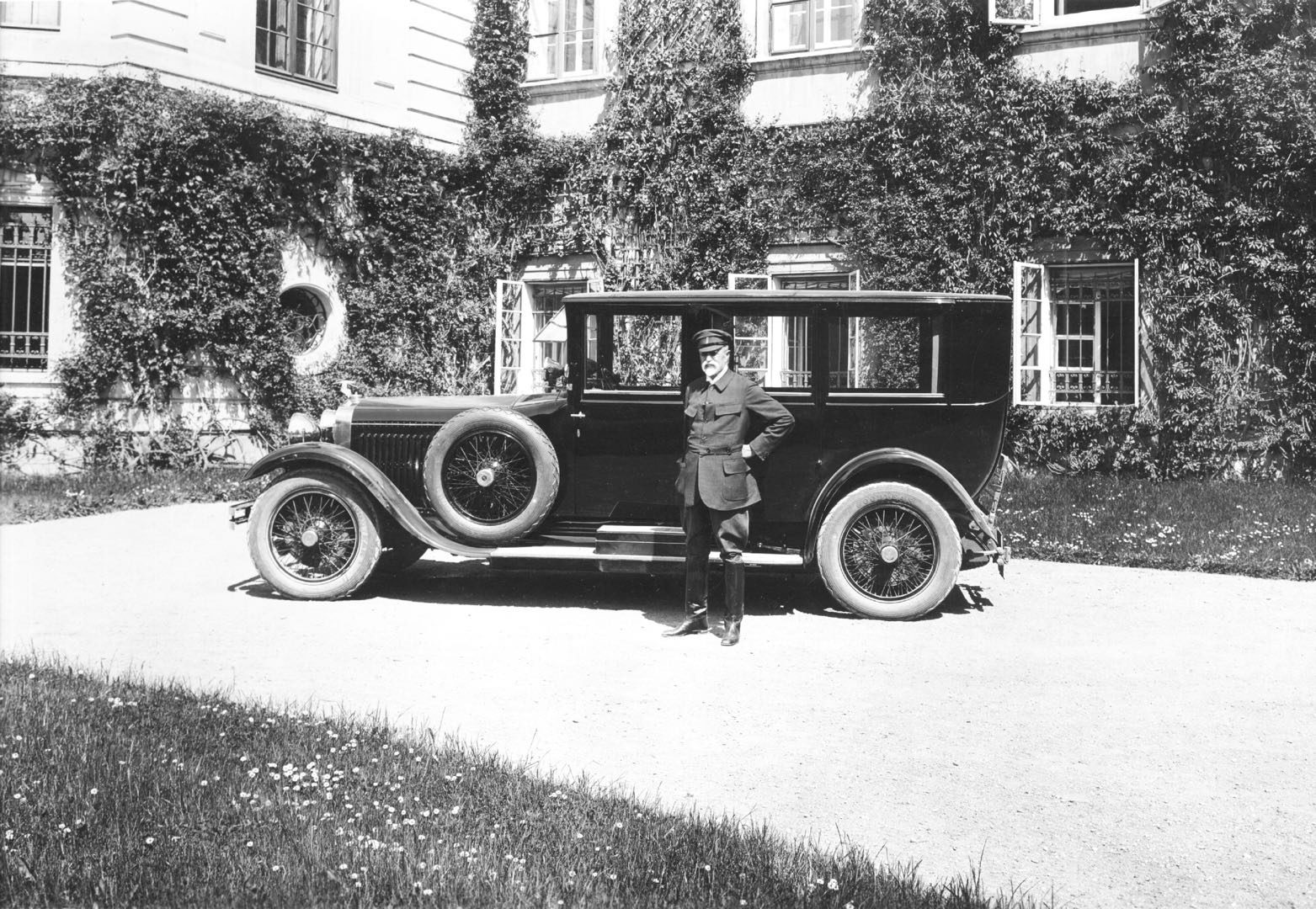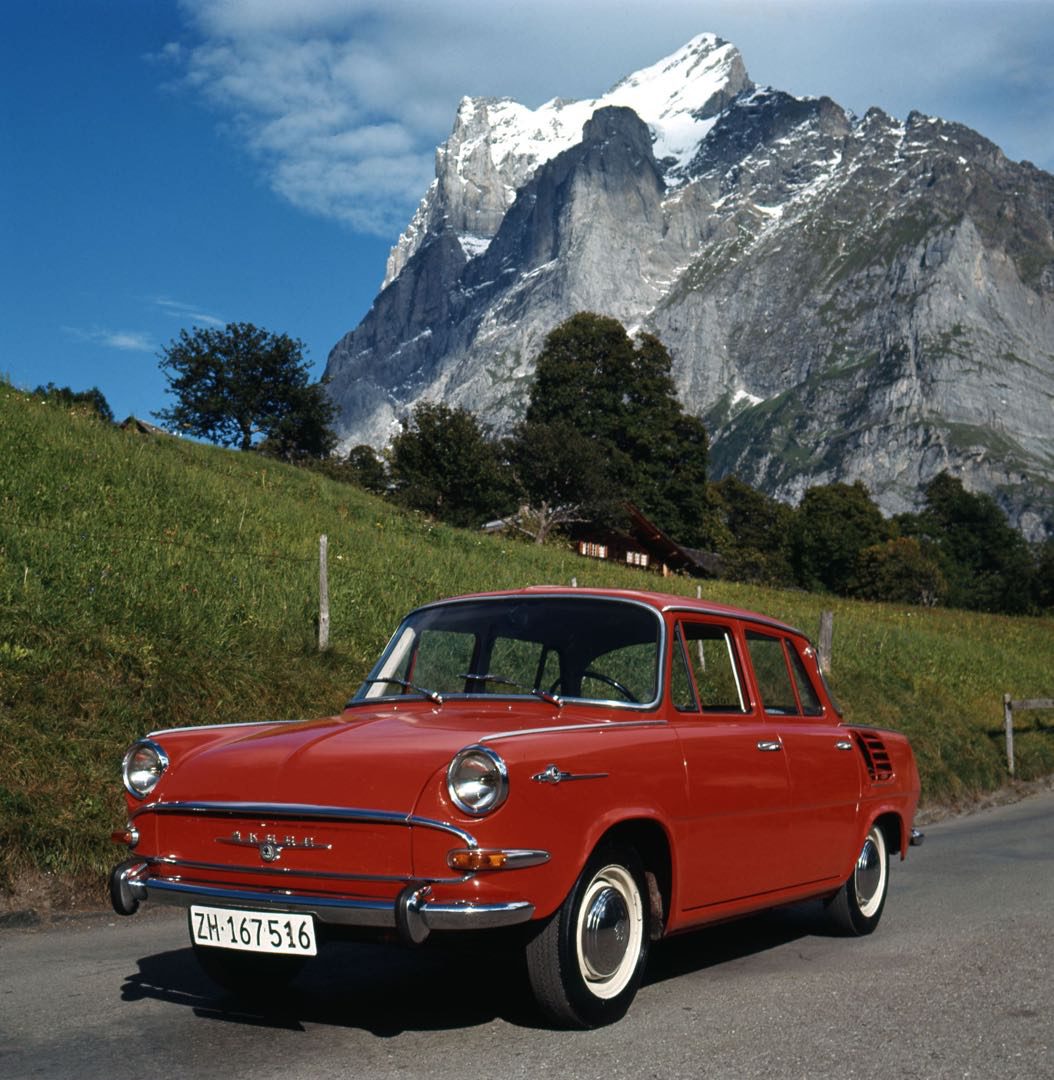The brand Škoda with its more than one hundred years of history counts among few world carmakers that have survived into the present and whose history stretches well back into the last century. Back in 1995 it was already celebrating one hundred years since its founding. Škoda automobiles belonged and still belong among the rich history of our country.
Back in 1918, at the time of the origin of Czechoslovakia, the automobiles from Mladá Boleslav, later from Vrchlabí and Kvasín, were the most widely distributed cars in our territory. The first official roster of motor vehicles from March 1922 reveals that from a total of 4,928 personal automobiles on our territory, the most – in this case 1,164 units – were from the brand Laurin & Klement. This company in the meantime worked itself into the largest enterprise of its type within Austria-Hungarian monarchy and was able to fully take advantage of the chance in the newly formed Czechoslovak Republic. Not only are we recalling this year a hundred years since the founding of Czechoslovakia, but we should not forget another jubilee – very closely connected with the Škoda brand. This year marks 150 years since the birth of Václav Klement and 80 years since his death.

Written in 1918
To start with, several notes of interest from 1918. So, for example, there were only two steamrollers in the Czech Republic for maintaining roads. In Prague a Club for Drivers of Passenger and Freight Vehicles originated. By law, a driver had to honk the horn at every crossroads. The firm Laurin & Klement commenced production of the Si model, which was linked to the pre-war model S. The vehicle was characterized by solid axle, rear-wheel drive and a cooled four-cylinder with a volume of 2.4 litre and an output of 18 kW.
Škoda automobiles belonged and still belong among the rich history of our country.
By year 1920, 116 cars had been made in the four- and six-seat, opened and closed versions, including a three-seater sporting type So. From 1918 to 1920 ten companies were making cars in Czechoslovakia: Laurin & Klement, Praga, Tatra, Walter, Novo, Omega, Pánek, Start, Stelka and Šibrava. The most was from 1930 to 1934, when there were 14 of them – Aero, Praga, Škoda, Tatra, Walter, Wikov, Jawa, Gatter, Atlanta, Centaur, Ferra, Hara, Myron and Juja.
Škoda in the Lives of Lords Laurin and Klement
Among the important dates in the century of history of our state is undoubtedly 20 July 1925, when at Lobeč castle near Mšeno Josef Šimonek (then president of Škoda plants and owner of the mentioned estate) and Václav Klement signed the merger of the companies Laurin & Klement and Škoda Plzeň. Even before the First World War, Václav Klement had looked for a business partner, because a large financial investment into buildings and engineering equipment was necessary for maintaining competitiveness.
In the difficult post-war economy, the merger was necessary, and the later sale of the company proved to be correct. Škoda in Plzeň already had a car division from 1919 and taking over the factory in Mladá Boleslav acquired additional importance. They partially transferred the licensed production of large representative Hispano-Suiza limousines from Plzeň do Mladá Boleslav. Laurin & Klement disappeared from the commercial register as an independent firm by the end of December 1925. Its logo, however, was used on the radiator of vehicles for several more years and supplemented with a winged arrow.
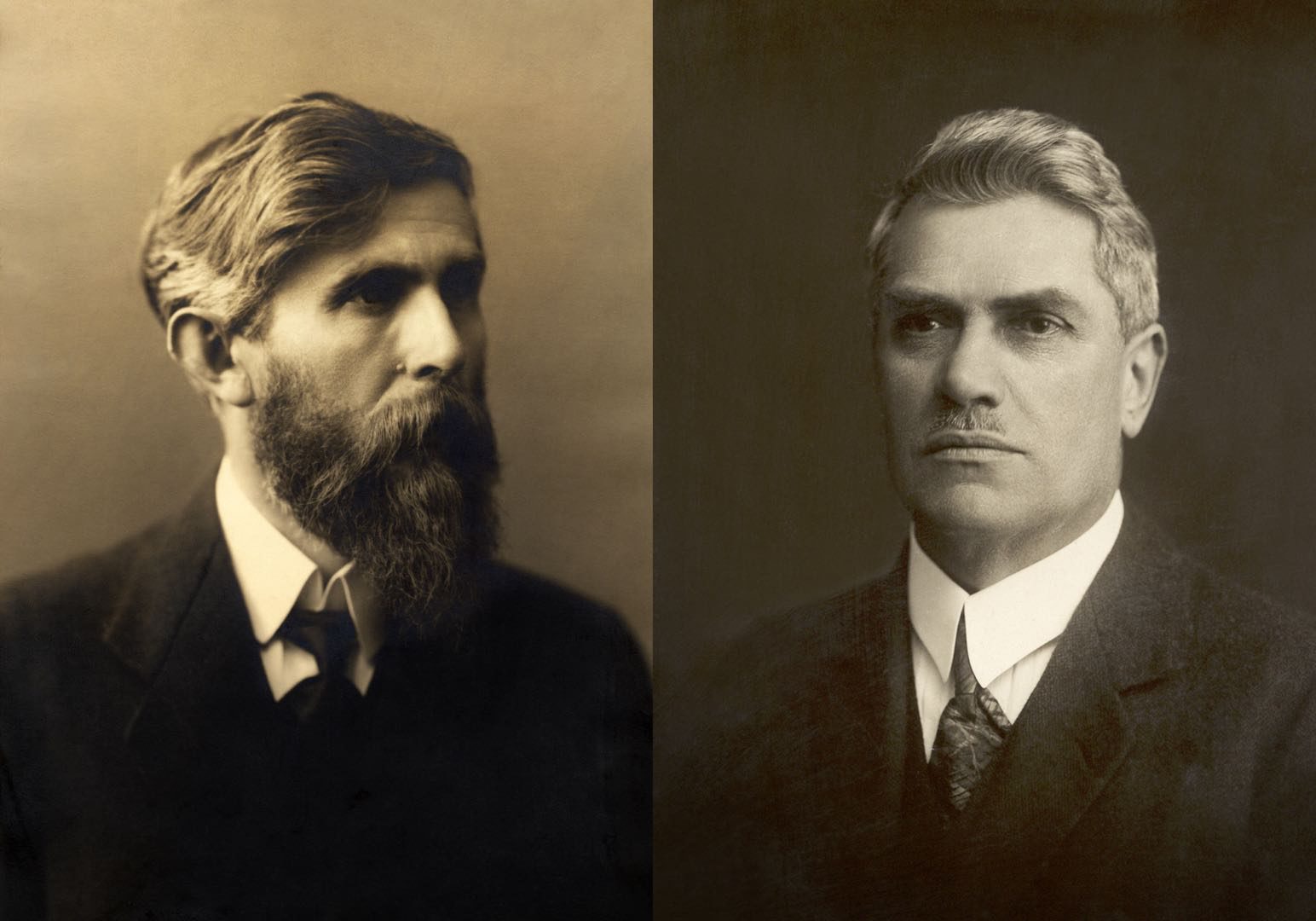
Škoda & Hispano Suiza
Škoda Plzeň made the luxurious six-cylinders under Hispano Suiza license from 1924 through 1929. Among experts it was then said that the quality of the production exceeded that of the French original. The undercarriages were not only made for the Škoda plant at Mladá Boleslav, but also for important foreign makers and domestic masters. For example, in the spring of 1926 Plzeň Brožík completed a limousine for President Tomáš Garrigue Masaryk, which was used for 10 years as the official presidential automobile. The vehicle was driven by a petrol serial six-cylinder OHV engine with an aluminium block with steel pistons. The seven-times inserted crankshaft with a weight of 45 kg was made from 350 kg of heavy forgings. From a volume of 6,597 cm³, the output was 73.5 kW at 2,750/min. With a directly controlled three-speed, non-synchronized transmission, the heavy, 2.7-tonne car reached a speed of 140 km/h. The fuel tank had a volume of 110 litres and for 100 kilometres it consumed 20 to 25 litres of fuel.
Models that Adorned the Century
Several models of the Škoda brand have played an important role in the century-long history of the Czechoslovak Republic. We can label the Škoda Popular as the first milestone, where the manufacturer for the first time ceased using a number and replaced it with the name. Much more important, however, was the new concept for the undercarriage, which endured for another 30 years.
Among experts it was then said that the quality of the production exceeded that of the French original.
They presented the Popular for the first time in 1934 with a 903 cm³ four-cylinder engine with an output of 13 kW. In order to prove its abilities, four such cars set off for India. The trip was 14,500 kilometres long and they managed it without any hitches. In 1935, the Popular was also upgraded to an even larger volume of 995 cm³ and an output of 16 kW. An independent chapter is the sports version of the Monte Carlo, which had a volume of 1,386 cm³ and a power of 26 kW. From the Popular up through several other models and through the 440 series, known as Spartak (1955 to 1959), the Octavia eventually crystallized in 1959. A new element was the redesigned front axle, which was no longer suspended by a transverse leaf-spring but with coiled springs. This improved its driving performance. In this period, it was a cheap, reliable and well-controlled car. In the following year, the ever-practical combis were introduced and were offered until 1971. The Felicia cabriolet, made in Kvasín, elegant in its time and still today, was derived from the Octavia.
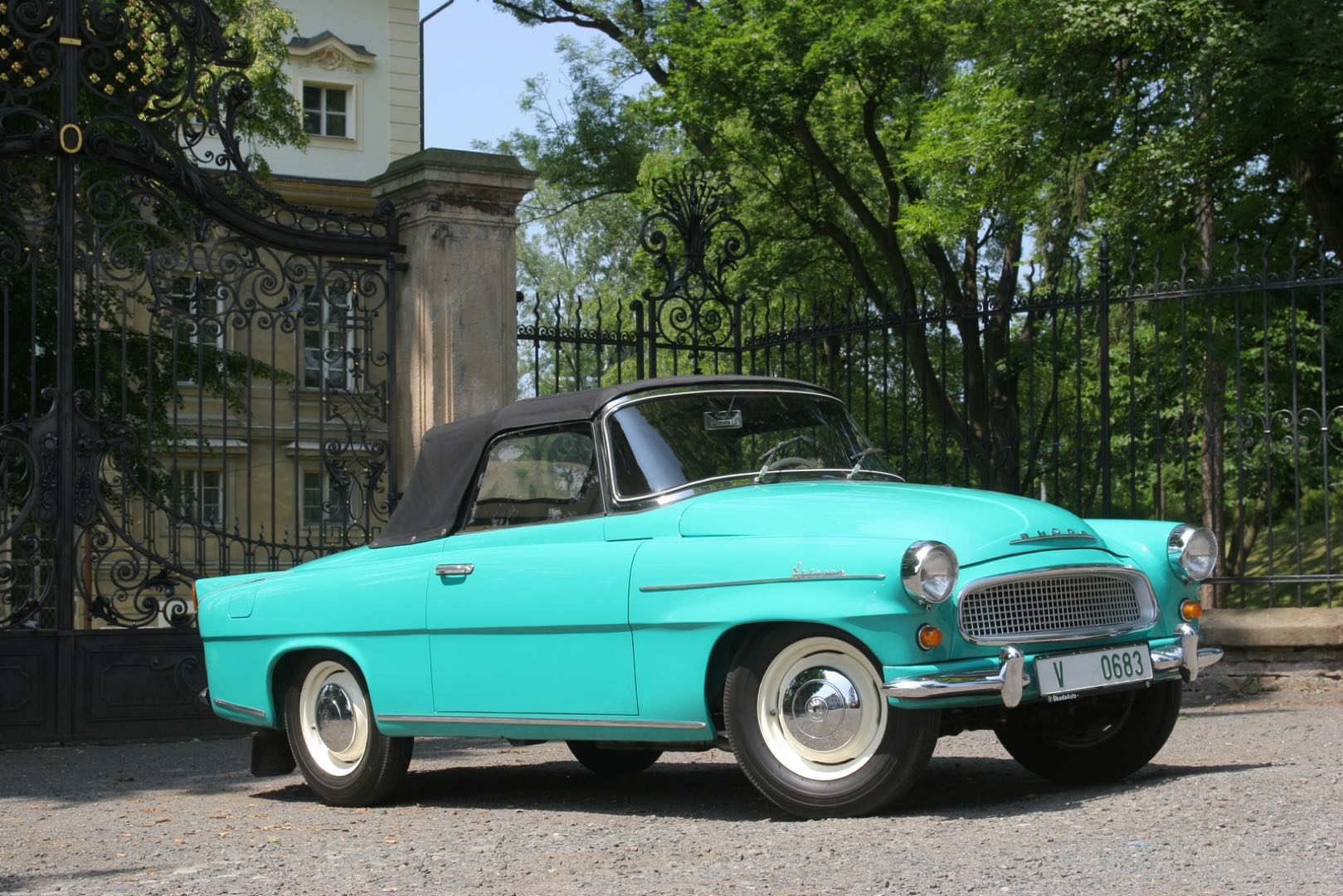
Five years later (1964), the Octavia was replaced by the so-called “em-beeˮ, a 1000 MB series, the first Škoda with a self-supporting body, a litre engine at the rear and a rear-wheel drive. The naming recalled the 1000 years since the founding of the town of Mladá Boleslav. The two-door version of the MBX, which is currently sold for as little as CZK 750,000, is very highly valued. In 1969 production began on the 100/110 series, which in 1976 was replaced by the 105/120/130 and 135 series. This was the last car with the motor in the back and rear-wheel drive. Škoda was one of the last brands to maintain this concept, doing so up to 1990, when it replaced it with a front engine and the front wheel drive.
Not Only Four Cylinders
During a hundred years of the Czechoslovak Republic Škoda mainly produced four-cylinder engines, as well as multi-cylinder engines. Between 1929 and 1935, six cylinders were found in Škoda cars, in the 6 Series, though this era ended with the Superb model from 1934 to 1939, which had engines ranging from 2.5 to 2.9 litres and outputs ranging from 41 kW to 47 kW. The Superb models had an even still larger volume – 3.2 l/62 kW and 4.0 l/71 kW, respectively – from 1938 to 1949. The climax of pre-war Škoda production was the eight-cylinder SV with a capacity of 3.8 litres and a power of 44 kW for the model 860, which saw the light in 1929 and was produced for another four years.
The Milestone with the Name Škoda Favorit
An important milestone occurred in 1987, when the Škoda Favorit was introduced at the Brno Engineering Fair; its serial production was launched the following year. The world premiere took place in 1989 at the Amsterdam Motor Show, and Nuccio Bertone, whose Stilo Bertone from Turin had the task of designing all four models – the hatchback, the combi, the sedan and the coupe – took part personally in the launch of the car on world markets. The project for a new passenger car with a front motor and front-wheel drive was begun at the direction of the government in December 1982. The deadline, however, with two and a half years to complete the development and start production within five years, was nonsense.
We can label the Škoda Popular as the first milestone, where the manufacturer for the first time ceased using a number and replaced it with the name.
The head of the implementation team, Ing. Petr Hrdlička, CSc., assembled qualified, sacrificed and motivated workers around him and set to the task. Compared with previous Škoda 120, for example, the number of cast parts was decreased from 405 to 227. Although the Favorit was shortened by 40 mm, it offered an interior that was 85 mm longer and a larger luggage compartment volume. The front wheels were driven by a proven four-cylinder OHV with a displacement of 1,289 cm³ and an output of 46 or 43 kW, fitted with a carburettor, later with fuel injection. Production first began in Vrchlabí at the beginning of December 1987, and in Mladá Boleslav in August of the following year. The Skoda Favorit 136 L (de Luxe) sold from 84,600 Czechoslovak crowns (the Škoda 120 L cost 65,630 CZK), at a time when the average gross monthly salary was CZK 3,030.
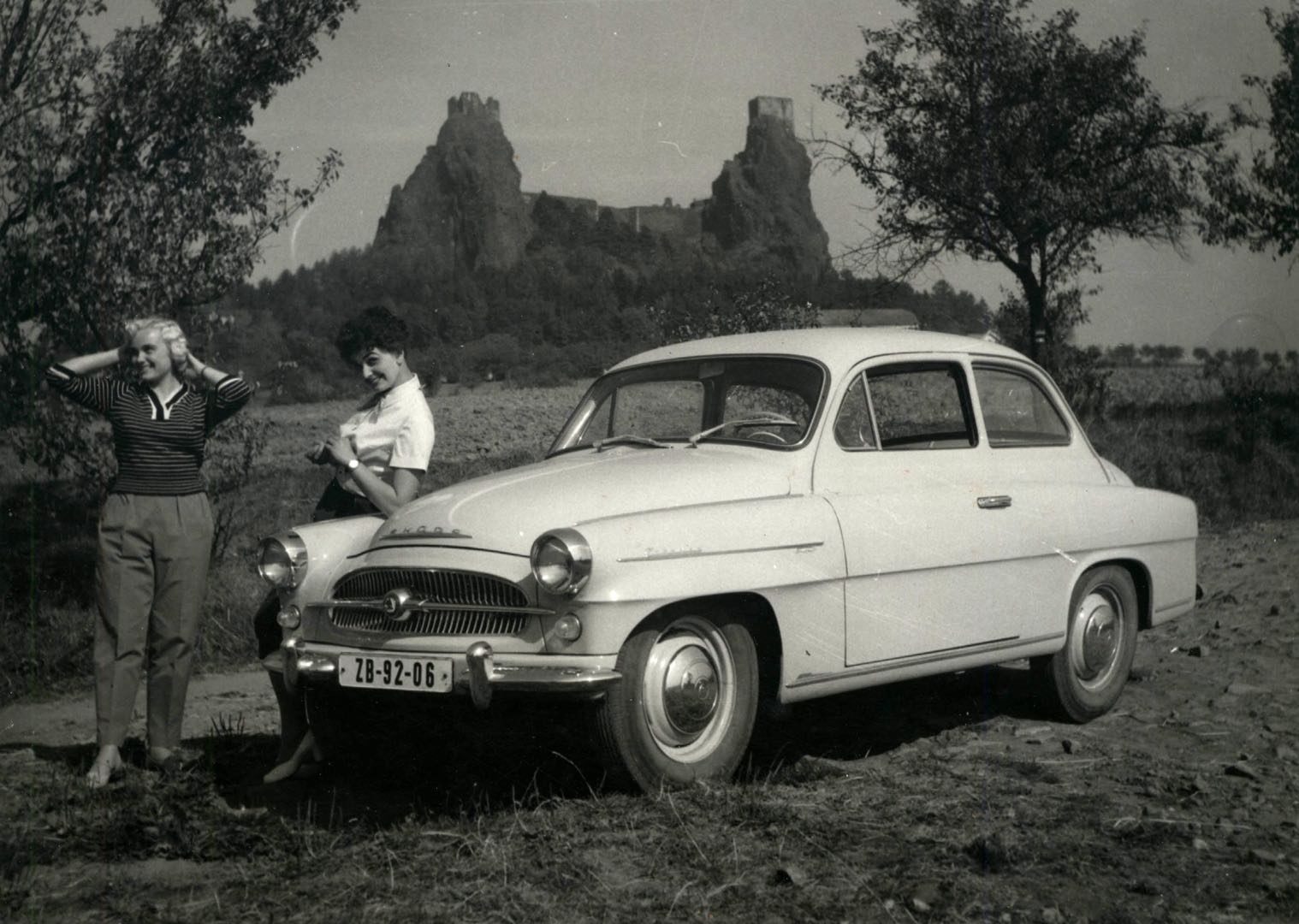
A Century-Old Story with Significant Personalities
Perhaps everyone knows that the production of automobiles in Mladá Boleslav is the result of two men – mechanic Václav Laurin (1865 – 1930) and bookseller Václav Klement (1868 – 1938) – founders of the company Laurin & Klement. However, two other persons had a major effect in the history of the Škoda brand. For example, lawyer, financier and manager JUDr. Karel Loevenstein (1885 – 1938), who is credited with the post-war stabilization of the Škoda plants in Plzeň and after entry of the Škoda concern to Laurin & Klement, ensured development of the Mladá Boleslav business with a major investment program. He is thus one of the key personalities from the First Republic in the history of Škoda.
Mr. Laurin and Mr. Klement were already well aware of the importance of motor sports for the promotion of motorcycles and cars.
For all the other big personalities, we shall mention Ing. Vladimír Matouš (1896 – 1963), who studied at the Czech Technical University in Prague and shared in the licensed production of the luxury car Škoda Hispano Suiza at the Plzeň factory. In 1928 they appointed him in Mladá Boleslav as the head designer of passenger and light utility vehicles. His emphasis on quality, reliability and standardised components are applied in the start-up of assembly line production or the changeover from a ribbed to a spinal undercarriage frame and from a solid axle to independent suspension of all the wheels. Before his death in1959, he is credited with starting the production, for example, of the models Škoda 1200, 1201 and 440.
Vavrín Cars in Motor Sports
Mr. Laurin and Mr. Klement were already well aware of the importance of motor sports for the promotion of motorcycles and cars. And so, in 1901 Narcis Podsednicek stood at the start of the race from Paris to Berlin with an LK motorcycle. He didn’t win, but only because the organizers were not prepared for someone to reach the finish line so quickly. Somewhat forgotten is the success of Václav Vondřich, who won the Gordon Benettov Cup in 1905 in French Dourdan, which was then the unofficial world championship.
After the motorcycles came cars, first L & K and then Škoda. As early as in 1936 Zdeněk Pohl and Jája Hausman took second place in their class in a Škoda Popular and twentieth overall at the famous Monte Carlo Rally. In 1977, Václav Blahna and Lubislav Hlávka followed up this success, winning their class with a Škoda 130 RS, but finishing a much more valuable overall twelfth place. In this year the plant’s pair of Jan Kopecký and Pavel Dresler won in the WRC2 category with a Škoda Fabia R5 (and tenth place overall). The racing car Škoda 1100 OHC also played an important role in the long-distance racing circuit on the track.
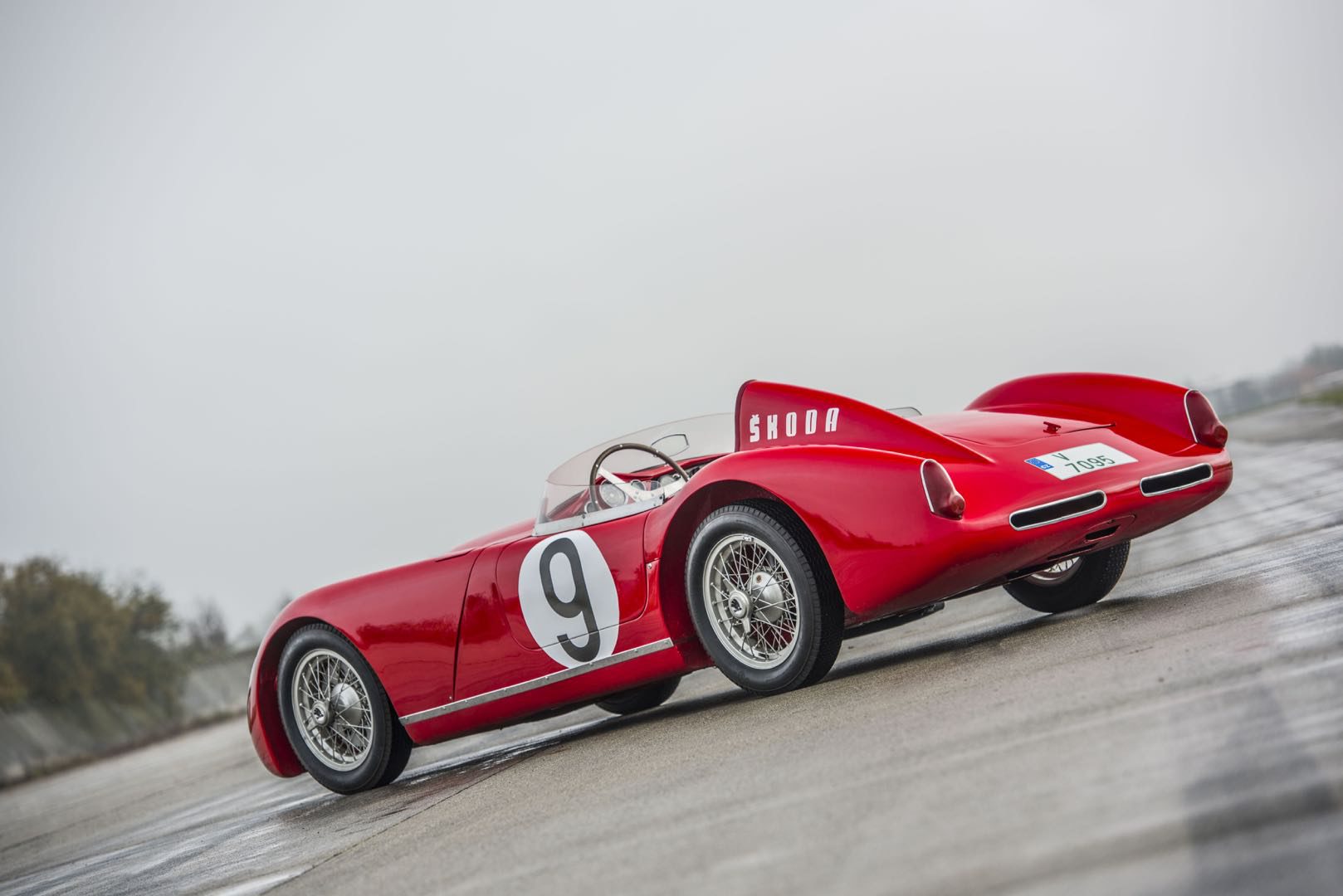
The Vavrín škoda plant also took part in the toughest of competitions, such as the Acropolis Rally or the RAC Rally. Still worth mentioning is an absolute first place at the European Touring Car Championship in 1981, where Zdeněk Vojtěch, Břetislav Enge and Jan Šenkýř were awarded first place overall. In 1994, the Škoda Favorit won the FIA Formula Two World Cup for two-litre cars driven by one axle. The last major success thus far was the title of world champion in the EWRC2 rally category both among brands, as well as individuals (Pontus Tidemand). Škoda has thus put a definite full stop, but certainly not the last, on the century-long history of our state.
Text: Tomáš Vaněk, photo: brand archives




